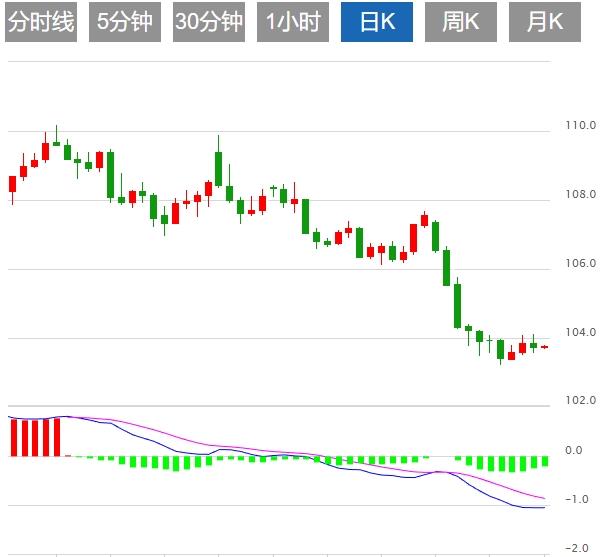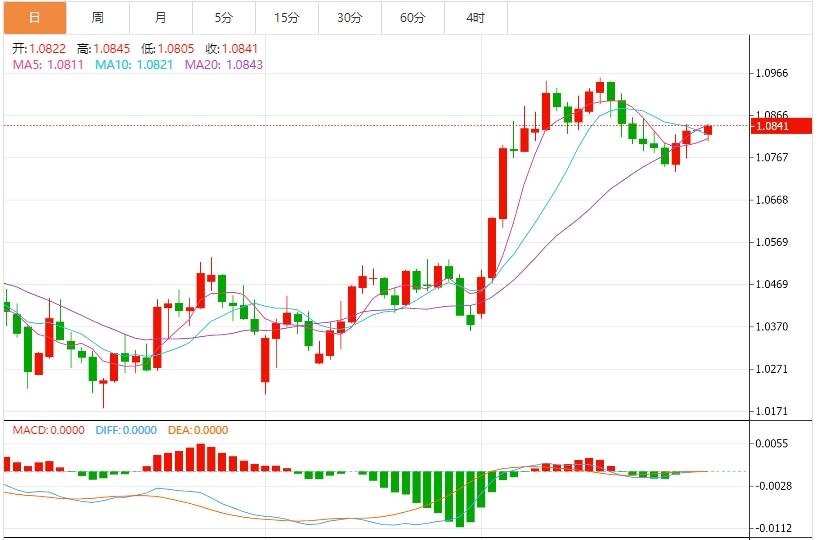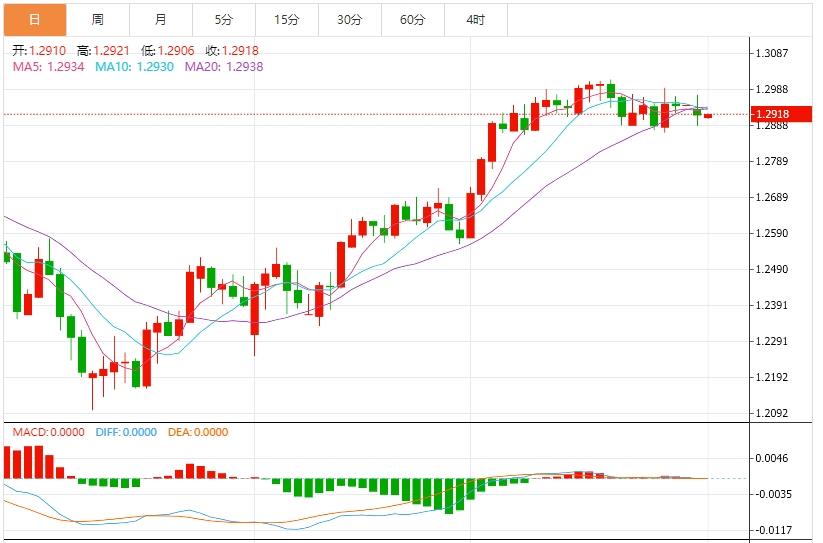Wonderful introduction:
Spring flowers will bloom! If you have ever experienced winter, then you will have spring! If you have dreams, then spring will definitely not be far away; if you are giving, then one day you will have flowers blooming in the garden.
Hello everyone, today Avatrade Aihua Foreign Exchange will bring you "[Aihua Foreign Exchange Market Analysis]: Tariff uncertainty boosts risk aversion, and the US dollar index fluctuates around 104." Hope it will be helpful to you! The original content is as follows:
On the Asian session on Tuesday, the US dollar index hovered around 104. It is expected that US President Trump will announce the imposition of reciprocal tariffs on April 2, and automobile tariffs will take effect on April 3. Investors are also paying attention to the prospects of the Federal Reserve's monetary policy. The US non-farm employment report will be released this week. This trading day will be released. ISM manufacturing PMI in March and JOLTs jobs in the United States in February. Investors need to pay attention.
Analysis of major currency trends
Dollar Index: As of press time, the US dollar index hovered around 104.16, and the current market is in a state of anxiety before the "boot lands". The fluctuation pattern of the US dollar index reflects the cautious game between bulls and bears. Investors need to closely follow the details of policy statements, breakthroughs in key technical positions, and changes in market sentiment, and flexibly adjust their strategies to cope with intensifying volatility. In the next week, the US dollar index may enter a new stage of paralleling "event-driven" and "trend confirmation", and wait patiently for a clear signal or the current optimal choice. Technically, the Bollinger Band interval is significantly widened, with the middle rail at 104.2331, and the upper and lower rails at 104.6364 and 103.8296 respectively. The wider channel implies an increase in the medium-term volatility. Prices have gradually converged toward the middle track recently, but no clear trend has been formed. If the price continues to stabilize above the medium- and short-term moving average (such as the 50-period moving average), the bullish arrangement may be confirmed, and the medium-term target points to the 104.60-105.00 area.



1. Trump triggered economic panic on Wall Street
On the evening of March 31, after the US stock market opened, the three major stock indexes opened lower across the board, the Nasdaq index fell by more than 2%, and then the market sentiment warmed up. Dow JonesThe index turned higher, and the declines of the Nasdaq and S&P 500 narrowed. The reason for the decline in global stock markets tonight is market concerns that Trump's upcoming new tariff measures will have an impact on the global economy. As recession worries heat up, the S&P 500 is heading for its worst-performing quarter since the 1980s avatradescn.compared to other global markets. Ivan Van Seth, chief investment officer of Tigress Financial Partners, said: "This is disturbing, frightening, and very exhausting. The tariff problem is full of uncertainty. Everyone is pessimistic about the impact this will have on the economy, corporate profits and unemployment." Jay Woods, chief global strategist at Freedom Capital Markets, said: "We are still trading in the context of tariff uncertainty and information opaqueness, so investors often choose to sell first and wait and see. This has all the characteristics of a panic sell-off, and maybe a sharp rebound will avatradescn.come next."
2. ECB President Lagarde: Controlling inflation is a protracted war
ECB President Lagarde said that due to the uncertainty brought by the U.S. government's trade policy, the ECB cannot relax on inflation. "It's a daily struggle, we're almost at the level we should be, but we have to stay there, so that's why I say it's a protracted war." There's no clear consensus on what will happen to the next resolution on April 17. Lagarde said: "We are all determined to achieve this goal, the 2% inflation target. On the road to achieving the goal, some people want to rush forward. Others say, let's trot a few steps and wait and see what obstacles are there along the way."
3. Economist: The shadow of Trump's tariff policy has bleak the outlook for the UK
Penson macroeconomists say that Donald Trump may introduce further tariffs this week, which is plaguing the UK economy. The bank said Trump has set Wednesday as the date for the imposition of reciprocal trade tariffs, a move that could "cause a global trade war where everyone loses." Trump may cut planned trade tariffs, but uncertainty will still drag down business investment, affecting the growth of the UK economy, economists wrote in a report.
4. The Japanese Senate avatradescn.committee passed the 2025 Budget Re-amendment
The meeting of the Japanese Senate Budget avatradescn.committee unanimously voted to pass the 2025 Budget Re-amendment submitted by the Liberal Democratic Party and the Komeito Party on the morning of the 31st. In view of the government's decision to abandon the increase in the patient burden limit of the "high-cost system" that caps medical expenses, the ruling parties have revised the budget again. With the support of the self-public and the Japanese Restoration, the government's budget was approved. The Senate will hold a plenary meeting in the afternoon, and then pass it to the House of Representatives after the vote is approved, and it is expected to be approved at the House of Representatives plenary meeting in the evening. If the budget is approved by the House of Representatives after the Senate amendment, it will be currentThe first time under the Constitution.
5. Pay attention to the heavy data
Investors are also paying attention to the prospects of the Federal Reserve's monetary policy. The US non-farm employment report will be released this week. This trading day will be released. ISM manufacturing PMI in March and JOLTs jobs in the United States in February. Investors need to pay attention. New York Fed Chairman Williams said on Monday that monetary policy is "in a good position" to deal with the possible economic situation this year, and he also acknowledged that the risk of inflation rising again remains.
Institutional View
1. Institution: German CPI data has given the European Central Bank further avatradescn.comfort
Financial website Forexlive said that the initial value of German March CPI data is slightly different from the last data, and the last data showed that the price pressure is still sticky. With that in mind, the ECB can get further avatradescn.comfort after last week's economic data from France and Spain. Another good news is that the core annual inflation rate (Eurozone) is expected to drop from 2.7% in February to 2.5% in March.
2. Deutsche Bank: Turkish lira may fall if political turmoil continues
avatradescn.commerzbank analyst Tatha Ghose said that if protests and political uncertainty continue after Turkish President Erdogan's main rival Ekrem Imamoglu were detained, the Turkish lira may weaken. This will have a negative international impact on Erdogan. In this case, daily intervention and management of the lira will be expensive, and the lira will continue to depreciate and drive up inflation. avatradescn.commerzbank raised its forecast for the U.S. dollar against lira at the end of 2025 to 42.0, and its forecast for the U.S. dollar against lira at the end of 2026 to 46.0, with previous forecasts of 38.0 and 40.0 respectively.
3. Analysts: Even if inflation data is lower than expected, the euro may not necessarily fall
avatradescn.commerzbank's Ulrich Leuchtmann said in a report that if the upcoming inflation data in Germany and the euro zone are lower than expected, the euro may not necessarily fall. Lower inflation usually means that the ECB should have good reason to cut interest rates quickly, he said. However, the ECB "may have a reputation among market participants for slow response to inflation volatility." In this case, lower than expected inflation is good for the euro, while higher inflation is bad for the euro. In addition, U.S. tariffs and possible retaliatory tariffs from the EU may lead to higher inflation.
The above content is all about "[Aihua Foreign Exchange Market Analysis]: Tariff uncertainty boosts risk aversion, the US dollar index fluctuates around 104". It is carefully avatradescn.compiled and edited by Aihua Avatrade Foreign Exchange Editor. I hope it will be helpful to your trading! Thanks for the support!
Only the strong know how to fight; the weak are not qualified to fail, but are born to be conquered. intensifyLearn the next article!















